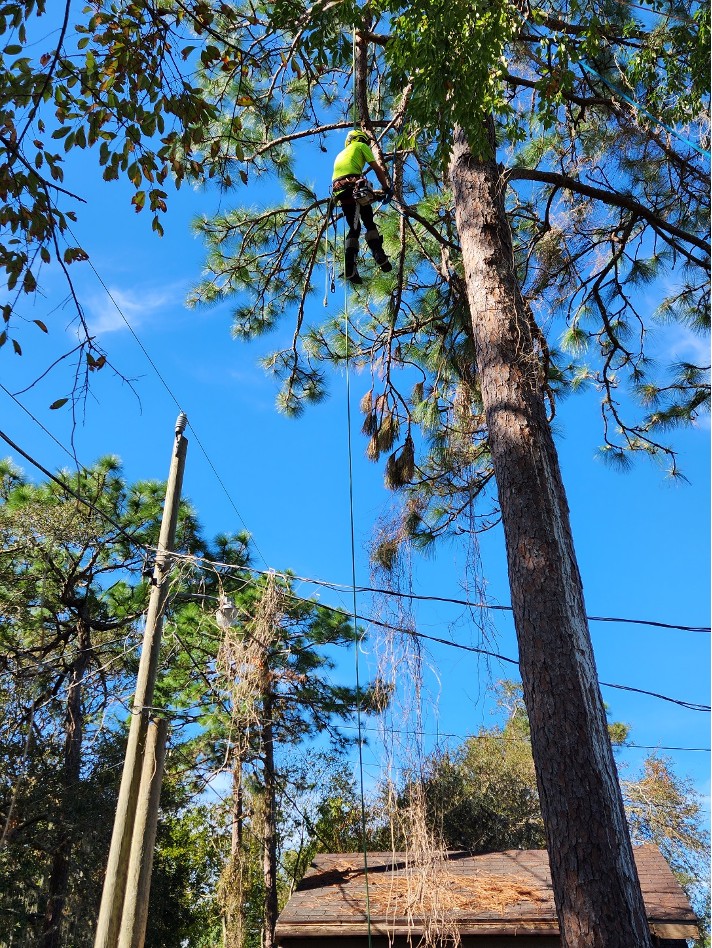Is your garden your pride and joy? Are you fond of the trees in your garden? If your answer to both of these questions is yes, you’ve come to the right place. Keeping your garden healthy is crucial. However, how do you know if the plants or trees in your garden are thriving or fighting for their life?
That’s why we have discussed some signs of a diseased tree that you can watch out for. Here’s what you need to know:
Fuzzy Or Moldy Areas On The Leaves
Black, gray, or white fuzzy patches on your leaves can only mean one thing: A fungal infection. Black sooty mold and powdery mildew are two common examples of fungus and mold on leaves.
Black sooty mold grows on a sticky substance called honeydew. Aphids secrete this honeydew when they feed on the saps of the tree. It’ll grow on any surface covered by the honeydew, like branches or leaves.
In contrast, the white coating of a powdery mildew fuzz shows up in humid weather or growing season.
Spots And Blemishes On Leaves
If you see dark spots, sunken areas, blotches, and other blemishes on your leaves, they’re most likely a result of fungal and bacterial infection. Also, some spots might be caused by insect damage, like sap-sucking spider mites.
To figure out what’s causing this, you should look at the location, size, shape, and color of the spots, the tree species, and the time of the year. Most of the time, you’ll find insect pests as the root cause. Other times, you may be able to identify the presence of galls or fungal fruit bodies.
Yellowing leaves
Are your tree leaves turning a yellow color when it’s not the fall season? Your tree might have nutrient deficiency. When your trees aren’t getting the nutrients they need, they can become chlorotic and yellow. You may also notice some stunted fruit and leaves in your tree as well.
So, if yoursoil lacks nitrogenthat’s responsible for keeping your leaves green, you’ll notice your old leaves turning yellow, while new leaves are bright green. This is your tree directing the nitrogen where it needs it the most.
Also, if the soil pH is too low (acidic), it would make the nutrients like iron insoluble. This would make it difficult for your tree to absorb the nutrients. You can identify this condition by paying close attention to the veins of the leaves. Your leaves will turn yellow because of iron chlorosis. However, those leaves will have green veins.
To fix these issues, you would need fertilizing treatments. You can use slow-release fertilizers and compost to the soil to make up for the missing ingredients. However, if your soil is extremely acidic, it can’t be permanently altered to make it alkaline. So, the best thing you can do for your garden is to call professional tree removal services for your dying tree. And try to cultivate new trees and plants that can thrive in an acidic environment. It’ll save you from creating an artificial fertilization cycle and struggling to keep plants alive in an unhospitable environment.
Wilting Leaves On Your Trees
Can you spot wilted leaves on your trees? Pay close attention. You need to understand that leaves are like farmers. They harvest the energy from the sun and process it into food. However, if they’re wilting, they’re not working at full capacity for your tree. And if they fail to do their job, the tree suffers.
So, what makes the leaves wilt in the first place? One of the most common causes is heat stress. Leaves determine their water intake from the root system based on humidity and temperature changes. So, when the weather gets too hot, the leaves cannot pull the water to them fast enough and release it through their pores (transpire). So, they wilt, dry out, and turn a brown color.
So, you should water your leaves slowly and deeply in the early mornings until the weather in your area cools.
You also need to check if the soil is waterlogged. Waterlogged soil does not drain well, and it could be wilting the leaves. When too much water is absorbed by the leave tissues, they suffer from a lack of oxygen and drown from overhydration. These leaves will be soft and limp in appearance.
Another factor that can cause them to wilt is drought-stress in the hotter months. It means there isn’t water in the roots to keep the tree and leaves hydrated. So, a regular watering schedule during the day should keep your tree from drying out in the scorching heat. So, if wilting is caused by the drought, your tree should be back to normal after regular soaking in a day or two. These wilted leaves are drier and browner in color than heat stress.

Get Professional Tree Services In Deltona, FL, With Clayton’s Quality Tree Service LLC
If you’re dealing with a fallen tree or a dead tree in your garden, it’s best to call a professional for tree removal services and make room for a new tree. Also, If you’re looking for emergency tree services in Deltona, reach out to Clayton’s Quality Tree Service LLC.
They can provide tree removal and tree trimming services and make your garden look good as new. Visit their website or get in touch with them for tree emergency tree removal today!









